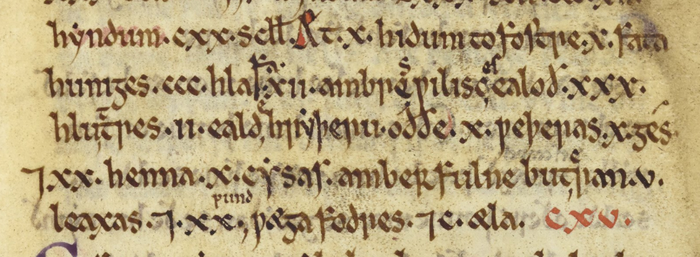England’s monarch King Henry I – the son of William the Conqueror – was incredibly unlucky. Not only did he die in 1135 after eating a plateful of eels to which he was probably allergic but the dish would only have been served as a very rare treat because he was a veggie or flexitarian.
Most royalty and powerful people in the early Middle Ages lived on a diet of bread and vegetable stew, only eating meat and fish on very special occasions, researchers have found.
Indeed, society at that time was mostly vegetarian or flexitarian as people used their livestock for providing milk and working the land instead of as food.
The surprising discovery came after a team of researchers from Cambridge University, led by bioarchaeologist Dr Sam Leggett, analysed 2,023 skeletons of people buried in England from the 5th to the 11th centuries.
They considered the location of graves and what the bodies were buried with in order to verify social class, then analysed the bones to determine disease and diets.
The researchers studied isotopes in the human remains – chemical elements present in plant and animal food that are deposited on the human skeleton – to decipher exactly what they ate.
Flexitarian Kings
They uncovered no evidence that higher social class was linked to greater meat consumption. And a lack of certain diseases in the remains suggests that even royal members of society were rarely eating animal flesh some 1,600 years ago. The wealthiest, most powerful people were vegetarian or flexitarian eating mostly plants.
‘The popular view has always been of a big social divide between the elites and the peasants, but their diet was the same,’ said study co-author and historian Dr Tom Lambert of Sidney Sussex College, Cambridge. ‘It shows on normal days they were mostly eating bread and vegetable stew. And once in a while they would come together for a nice spread or a barbecue. So [it was] an early form of flexitarian [diet].’

Meat, fowl and fish were all clearly available at feasts, as recorded by royal food lists that were studied, including one from the house of King Ine of Wessex who ruled from 688 to 726CE. This included mutton, beef, salmon, eel and poultry along with honey, cheese and ale.
But the team concluded that it was unlikely monarchs or other upper class members of society were eating meat daily as it was considered a luxury item.
‘The relationship with food was different. There is a difference between popping into the supermarket and killing your ox which you have had since it was a calf’
Dr Legget, Edinburgh University
‘I’ve found no evidence of people eating anything like this much animal protein on a regular basis,’ Dr Leggett said. ‘If they were, we would find isotopic evidence of excess protein and signs of diseases like gout from the bones. But we’re just not finding that. The rest of the time people were mostly eating stews of vegetables with grains, maybe some butter.
‘But butter for their bread was rare and probably quite seasonable as well.’
Dr Leggett added that animals were also considered as important in ways other than as food during the early Middle Ages.
‘Animals were quite special and had a special significance in society,’ she said. ‘Sometimes they were food, but the rest of the time they had a role in society, pulling ploughs and giving milk.
‘You invested money into having an animal and did not want to kill them so easily. The relationship with food was different. There is a difference between popping into the supermarket and killing your ox, which you have had since it was a calf.’
Paintings of extravagant carnivorous medieval feasts come from much later in the Middle Ages when vegetables were considered a sign of poverty, according to Dr Leggett.
‘The idea of a big fat king is from much later – it is not what we are seeing in the early Medieval period,’ she said.
The findings also indicated feasts were far more egalitarian than previously thought.
‘Historians generally assume that medieval feasts were exclusively for elites,’ said Dr Lambert. ‘But these food lists show that even if you allow for huge appetites, 300 or more people must have attended. That means that a lot of ordinary farmers must have been there.’













